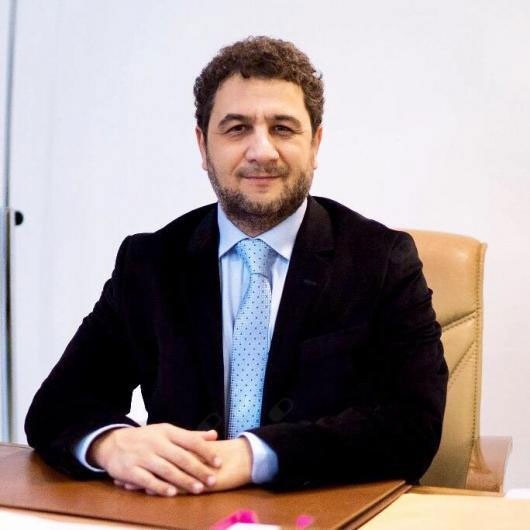10 Common Mistakes in IVF Treatment
Myth: IVF is a difficult and painful treatment method
IVF treatment is a reproductive treatment method that has become very easy recently. In vitro fertilization treatment was reduced from 45 days to 15 days, together with the newly used drugs, and the number of injections for patients decreased from 60s to 20s. However, today, "natural" IVF treatments, which are also obtained by using only pill-form drugs, continue to be applied successfully.
Soft protocols using a small amount of drugs not only minimized the interval between going to and from the center for control, but also minimized side effects such as bloating and pain. Today, IVF is a very easy treatment method that starts and ends within 15 days and has almost no side effects.

False: Freezing of excess embryos does not need to be done as it is not successful
Embryo freezing is an application that has been used for many years and offers patients the possibility of extra pregnancy. However, the healthy recovery of approximately 50% of the embryos frozen in the past made us think that this treatment was not very successful. With a new freezing method that has been applied in the last 3 years, it has been shown that almost all frozen embryos are recovered in a healthy way. In this way, the difference in success between fresh IVF treatment and frozen IVF treatment has now been closed, and even more successful results have been obtained with frozen embryo treatments in some IVF centers.
Embryo freezing method is a very important advantage to be offered to patients in countries where the amount of embryos transplanted is limited, such as Turkey.
Myth: Other people's sperm or eggs can be used or mixed in IVF.
IVF centers have to work without making any mistakes. They determine their own systems as a result of this rule. Applied transactions are never in the hands of a single person. Every step must be supervised by at least 2 people. Embryology laboratories are places with high security systems. Entry and exit are limited to a certain amount of authorized persons, and it is ensured to be kept under constant supervision, thanks to the system with a closed circuit camera 24/7.
Myth: More success is achieved in second attempts in IVF.
In IVF treatment, the first 4 treatments have approximately equal success values. 4. The success rates of the treatments applied after the trial decrease a little more compared to the previous one. The most important aim of all in vitro fertilization centers is to ensure that the spouses have the babies they dream of at the first try.
Myth: IVF can be done at any age
A woman's egg reserves, that is, her reproductive capacity, change with age. The chance of reproduction, which is greatest until the age of 30, starts to decrease gradually between the ages of 30 and 35. Candidates over the age of 40 come to the frost period of the reproductive age. While the chance of success is around 50% in patients younger than 30 years of age, this rate is around 40 years old. If over 44 years of age, success is less than 1%.
Today, the first priority of women is mostly their education and career. After these are completed or realized, family life and the child are included. Women who want to have children should not forget that they can become mothers in the healthiest way between the ages of 25 and 34.
Myth: The success rate in IVF is zero.
Even though serious advances have been made in IVF treatment in the last 30 years, the chance of success is around 50%, even at best. Man is a creature with limited reproductive capacity. It is an unavoidable fact that as the age of the woman increases, the chance of getting pregnant decreases. Expectant mothers and fathers should always be told the correct probability of success.
Myth: Men with no sperm cells cannot become fathers.
With the technology that is advancing day by day, men who do not have any sperm in the tests now have a chance to become a father by performing sperm search operations under the microscope. Thanks to the operation, which is expressed as micro TESE, the progeny cells that are formed in the ovary (testicle) of the man but cannot be expelled from the body are detected and frozen. With these sperms, which are then transferred to the woman, the couple is enabled to have a baby.
Wrong: As a result of IVF treatment, twin or triplet pregnancy usually occurs.
It is a known fact that multiple pregnancies are encountered more frequently in IVF treatments. In order to take action against this, with the amendment made in the regulation in 2010, a single embryo transfer was allowed for the first 2 trials in patients younger than 35 years of age, and a maximum of 2 embryo transfers in all other patients.
In this way, the unlimited embryo transfer practiced in Turkey has been tried to be controlled to some extent. Although multiple pregnancies are especially desired by some patients, they carry a great risk for both the mother's health and the health of the babies.
Myth: It is necessary to lie down for a long time after IVF treatment
There is no scientific proof that lying down after IVF treatment and transfer increases the chance of pregnancy. The embryo placed in the mother's uterus will not fall due to the effect of gravity, and the placement process takes place on average 3 days after the transfer.
Myth: Drugs used in IVF treatment can cause cancer in women at an advanced age.
Hormonal drugs used in IVF treatments to increase and grow the number of eggs have been used for almost 40 years. Studies have revealed that women who have previously received infertility treatment do not have an increased risk of cancer compared to those who have not received treatment. The most important point to note here is that cancer is not caused by the drugs used in women who have had some infertility treatment, but is caused by the genetic risk of developing cancer.
You can visit our Youtube page to get fast and accurate information on personalized in vitro fertilization treatment, pregnancy follow-up, IVF, gynecology, drug use trainings, and many more .
Gynecology, In Vitro Fertilization, Pregnancy and Reproductive Immunology pages.

